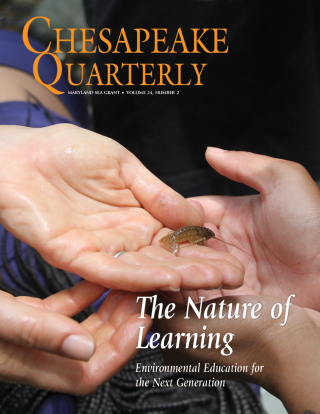Knauss legislative fellowships in Congress help build careers — and they're fun and educational. See our video and fact sheet for details.
Research Publications: UM-SG-RS-2007-20
Title:
Linking estuarine research to local community heritage & environmental values: lessons from the Chesapeake Bay.Year:
2007Authors:
Power, LP; Paolisso, MSource:
Practicing Anthropology 29 ( 1 ) : 29 - 34Abstract:
The Chesapeake Bay watershed has entered a period of great environmental and socioeconomic transformation. The Chesapeake Bay is the largest estuary in the United States, boasting a highly productive watershed with a complex ecosystem rich in plant vegetation, marine resources, and wildlife. The Bay resonates with cultural significance throughout the mid-Atlantic region, encompassing divergent environmental values and uses. Therefore, the Bay attracts a spectrum of resource users from strict preservationists to commercial fishermen, serving as a recreational outlet for residents and tourists, providing economic opportunity and livelihood, and representing a rich cultural history of traditional communities and outdoor activities. Over the last several decades, however, agricultural run-off, increased development, and other point and non-point sources of pollution have detrimentally affected arguably the most productive estuary in the world—thereby impacting the cultural and economic vibrancy of surrounding communities (Boesch and Greer 2003).'Related Research Project(s)' link to details about research projects funded by Maryland Sea Grant that led to this publication. These details may include other impacts and accomplishments resulting from the research.
'Maryland Sea Grant Topic(s)' links to related pages on the Maryland Sea Grant website.



